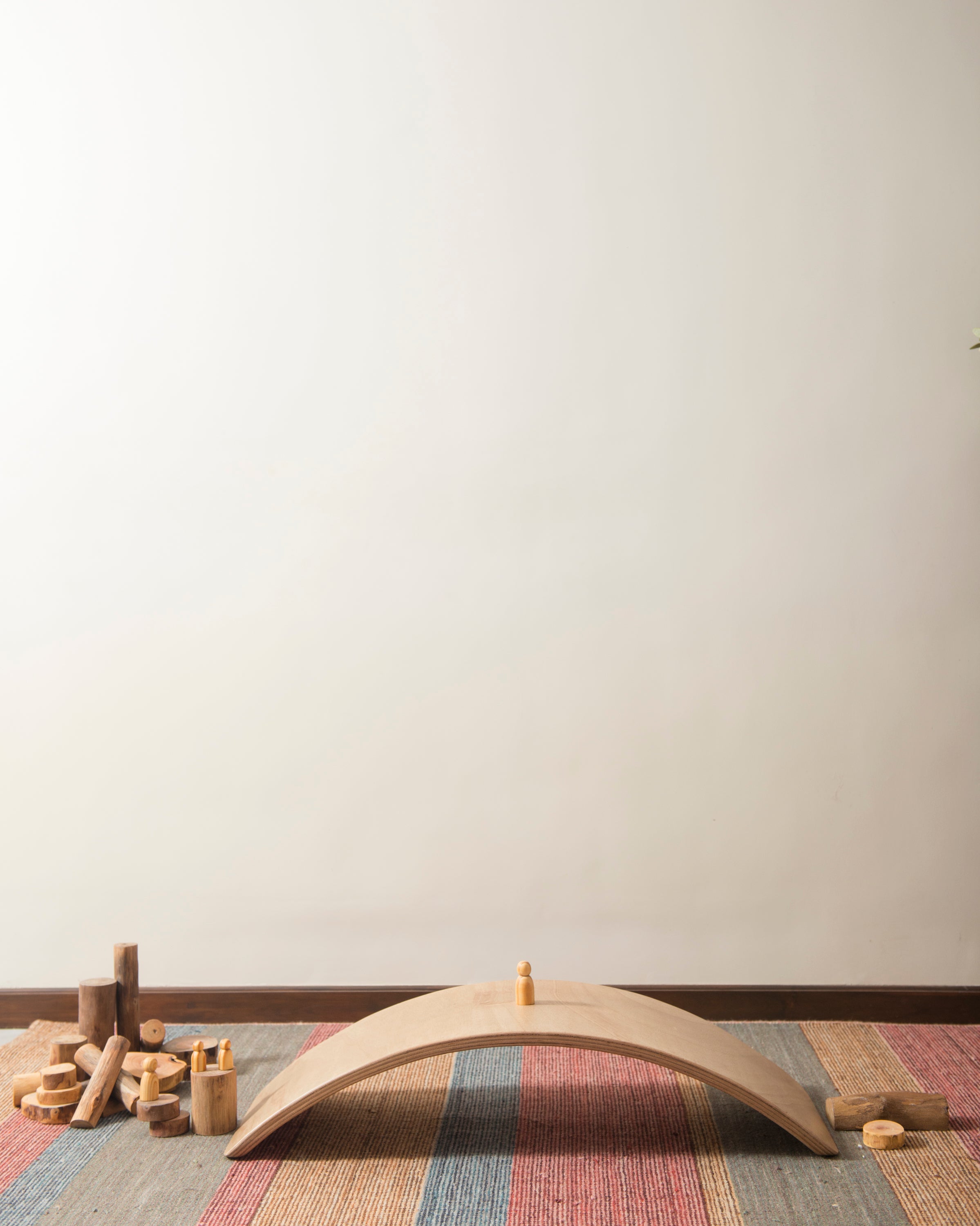
here’s a quick guide to creating a self directed play space at home. it doesn’t take a lot – small changes to the environment and some mindfulness on ones’ own part, and before you know it, your children will be gainfully occupied by themselves and you can divert your own attention to all the things that you want to be doing with your time.
1. lead by example
“children need to see adults engaged in meaningful work, for it inspires them to play” says joan almon, a teacher in a waldorf school.
in fact, most of the teachers in waldorf kindergartens, spend much of their time mindfully working away at some or the other preoccupation – whether it is carving a spoon out of wood or knitting a scarf for the winter – children observe the adults occupied harmoniously with their own “work” and are in turn inspired to pick up “work” (read: play) of their own. initially, you may see clear links between their play and your work – a demonstration of the role imitation plays in stimulating child play.
2. build a routine
a routine provides a predictable rhythm for the day. children begin to expect the same things at the same time, looking forward to them and feeling secure in their schedule.
to this routine, introduce some unstructured time daily – preferably at the same time everyday. gradually, you may begin to increase the amount of unstructured time as and when your child is ready for it.
children need regular time and space on their own to learn that they are indeed self-reliant, and capable of achieving many things.
3. create a safe space
the impulse to play is a biological drive - and all mammals play. but when we do not feel safe, the impulse to play disappears.
we need to create a space where our children feel safe, and know we’re at hand, even without our interference or constant supervision.
so let them know you’re right there, make sure all the materials you have are safe, and most importantly be calm yourself – your inner state of mind plays a large role in your child’s feeling of peacefulness
4. open ended materials / toys
having interesting, open ended toys available in a play space allows children to use the materials in any way they want to.
pick developmentally appropriate toys and materials which are safe for unsupervised play.
one does not need a lot of toys - having a few toys for long periods of time, allows children to build emotional bonds with their toys and explore the materials playing with the same materials in many many different ways.




2 comments
Hi Vibha,
Self directed play is a natural instinct. Every child will play by themselves quite naturally if we simply let them.
By trusting children’s innate wisdom, and providing an environment (right from the time they’re little) that allows them to take the lead in their own exploration and play you will naturally see self directed play unfold.
It is only when we keep “directing” them through activities, or “entertaining” them, that this instinct begins to get lost, they begin to doubt their own ability to self direct.
This is when you need to refer to the guidelines mentioned like the creation of a routine, the setting of an example and surrounding them with open ended matarials that allows the “play” to emerge from within them again :)
Hope this makes sense!
I am a new mommy to 6 months old twin boys. Though I understood how it goes. It would be great if you give an example or a picture or a map to show how to go about. Oh yes I really love your toys. Can’t wait to get them once my boys turn a little older.
Leave a comment